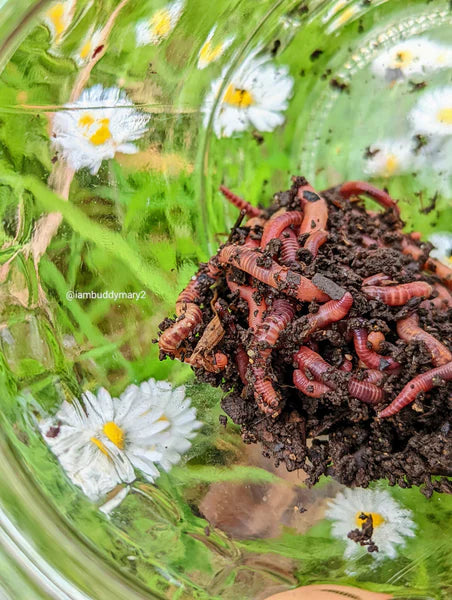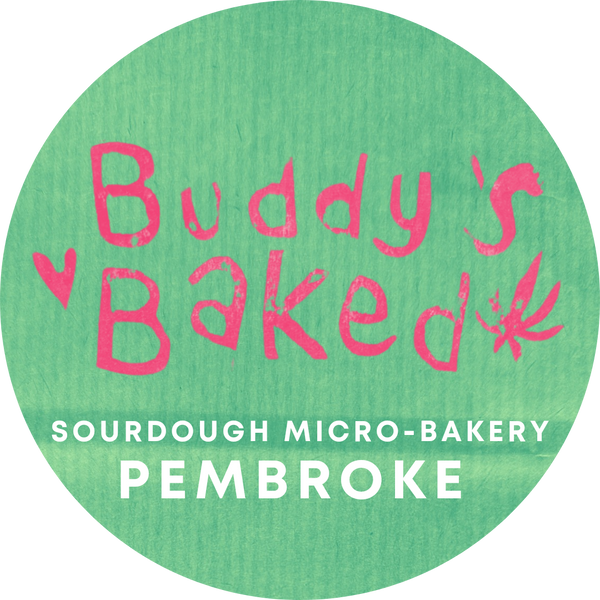
What is Living Soil Organics? A Brief Breakdown from Welsh Worms
Share

Written 14/05/2022
Living Soil Organics is something becoming more and more popular among farmers and consumers but what is it and why is it becoming a preferred method?
Kompost King of Welsh Worms helps me put together a brief basic bitch explanation and then shares their composting journey and how they fell in love with worms.
What is the general definition Living Soil Organics?
Literally what it sounds like. Soil that’s alive with a diverse range of biology. Soil that inhales, exhales, eats, digests and shits, just like a living body. That shit is what feeds the plants we put into that living soil. Like our own bodies, this living being needs equilibrium, it needs homeostasis to be healthy. That requires everything within that system working together. Everything is linked and plays an integral role. When you look at true living soil you can quite literally see it moving, breathing, living, teeming with life.
Within in the soil there is a complex web, a food chain, a production line. Everything has its role and purpose. With a healthy web you will grow healthy produce and a healthy planet. When organic matter rots, it has started to turn back into the soil it came from. Bacteria breaks it down, fungi eats away at it, shredders like namotoades (tiny tiny worms that feed on bacteria & fungus), protozoa (single organisms), isopods (woodlice), arthropods (compost mites), worms, all come along and help to excrete the next stage to be digested by this soil web. Feeding the soil to feed the plants. Breaking down the organic matter into plant available food.

This is a basic bitch explanation of what Living Soil is. It is such a big topic which has so much science it can very quickly become a bit confusing and overwhelming. Although this is whats naturally occurring in natures beds in the wild because of modern farming methods this food web has been destroyed and the importance of it is only recent been rediscovered championed by Dr. Elaine Ingham.
So Kompost King , how did YOU start your living soil journey?
Charles Dowding, a professional no dig gardener, introduced me to Living Soil. I didn't even know what no dig was until I found him. He put me onto the importance of soil biology. Before him I hadn't thought about it, it hadn't occurred to me to think of the soil on a level like that. Then I heard Raggamuffins, a Living Soil Organic Farmer talking about feeding his worms avocados, feeding the worms to feed the soil. This unlocked something and I started to do more research. I found that that method had been adopted by indoor farmers, its just the Americans were calling it No Till. This got me thinking about growing clean and organic produce for me and my family.

How did you get your compost pile started, where did you begin?
Last year, after reading a few books and doing research online, it became apparent very quickly that I needed to make good and healthy diverse compost to feed the soil. I started to look into how to make healthy compost and the science behind it. I started small in a compost bin which was gifted to me and started to gather materials.
I'd been doing a lot of gardening so had lots of garden refuse to start the bin off and began mixing in carbons & nitrogen's together at a 10:1 ratio. Carbons being things like wood chips, dead leaves, straw and Nitrogen's like chicken shit, nettles, grass clippings, weeds. After approx 3 days, to my delight the pile had heated up to over 50 degrees! As a first time composter, it blew my mind. After another week I flipped it and let it do its thing again.
As the compost was developing and starting to break down, it started smelling sweet and I was noticing life beginning to sprout! Mushrooms and mycelium in your pile is a really great sign. The temperature in the pile began to drop and as it did when I turned the pile, I noticed that a colony of worms had exploded!! The rate of decomposition accelerated. I let this pile do its thing & mature while I built another giant pile of compost as I wanted to try and get the temperature higher. We acquired chickens which gave me access to good clean manure which enabled me to grow the pile quickly. It reached 67 degrees which then pasterizes any nasty pathogens in the chicken shit.
Vermicompost & Worms
When I discovered Clakamas Coot / Jim Bennett, a well known organic gardener, he got me really thinking of the power of vermicompost, particularly his method of vermicomposting. (Vermicompost is waste produced by composting worms.)
Coot makes a thermophilic compost comprising of manure. (thermophilic are a

genre of bacteria that makes compost hot). When this compost is ready he adds a recipe of dried amendments, pumice stones/clay pebbles (to help aerate the mixture) and adds a large colony of worms. The dry amendments he uses are his own recipe of all natural organic elements typically in a ground down form to be more readily available for the biology to consume. This is layered through the
compost and the biology turns this into plant available fertiliser over the following months. You’ll notice the volume drop slightly. The texture and colour will change to as its digested into a rich humus. (Humus is the organic component of soil, formed by the decomposition of leaves and other plant material by soil microorganisms.)
Coots Amendments Recipe
Neem meal, Basalt (Volcanic rock dust)
Kelp Malted Barley Comfrey (fresh form)
For me it made a much more rich and nutrient dense product instead of feeding vegetable scraps to the worms which are full or water. Coots' results spoke for themselves. I was also very inspired by the fact this man is so invested in his worms.
If you’d like to see for yourself you can find his work here.
A Tiny Diverse World of Microbes
Your compost has cooled and your worms are munching the amendments, its stabilising and become a real nice place for different things to live in. Your healthy compost heap should be attracting more life to it than what you put in there. Compost mites, springtails, rove beetles, centipedes & their friends are all moving in and setting up home in this ecosystem. Some are predatory insects, some are fellow shredders helping to break down the organic matter. Everything takes up an important role in maintaining this growing living food web.

Where does the Kompost King source dry amendments from?
The vast majority of my dry amendments are sourced from a small business called The Whole Plant Collective apart from one product I love from Dr Forrest. Whole Plant Collective is a family run business based in the West Midlands. They started in 2019 with a passion for natural organic farming and helping people to grow the cleanest food and plant medicine
Please check out their website wholeplantcollective.com
You can follow them on Instagram at @wholeplantcollective and on Facebook
Use code KING for 5% off at checkout on their website.
Were there any hacks to increase the diversity of biology in your compost?
Yes, there are many ways to do this. One of the methods I used for my pile was a korean natural farming method called IMO. This stands for Indigienous Micro-Organisms. This method involves taking cooked rice and leaving it in a vessel out in nature i.e. woodlands and leaving it there approx 10days to allow it to colonise with fungi and bacteria that are in the forest's natural ecosystem. After 10 days, the vessel is collected and the rice added to your compost pile. As long as your compost pile isn’t too hot this will add biodiversity to your compost heap.

You’ve got Vermicompost, what next?
Vermicompost by itself is not Living Soil. You can put a plant into just vermicompost and will thrive. But we are trying to create something that will last years and just get better with time.
I take one part vermicompost, 1 part aeration (clay pebbles), 1 part substrate (organic coco coir) is mixed together minerals added in the form of basalt and clay minerals, oyster shell flour and gypsum. I'll also top up slightly on kelp, neem, malted barley and alfalfa.
Once this has been watered and you added a cover crop and more worms, a living soil bed has been created. All the biology makes the nutrients plant available in exchange for sugars and carbon from the plant roots. This is the meaning of living soil.
Welsh Worms will be opening a section in Buddy Mary’s shop where you'll be able to purchase Vermicompost as well as limited drops of Welsh Tiger Worms.
Welsh Worms Blog will be launching in the future bringing you more in-depth wormy content.
For the meantime with real time updates follow @kompost_king and @welshworms on Instagram.

